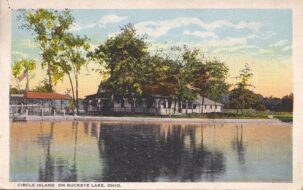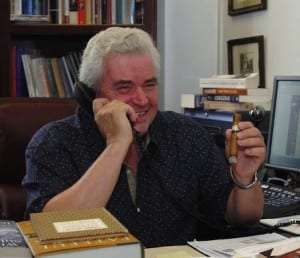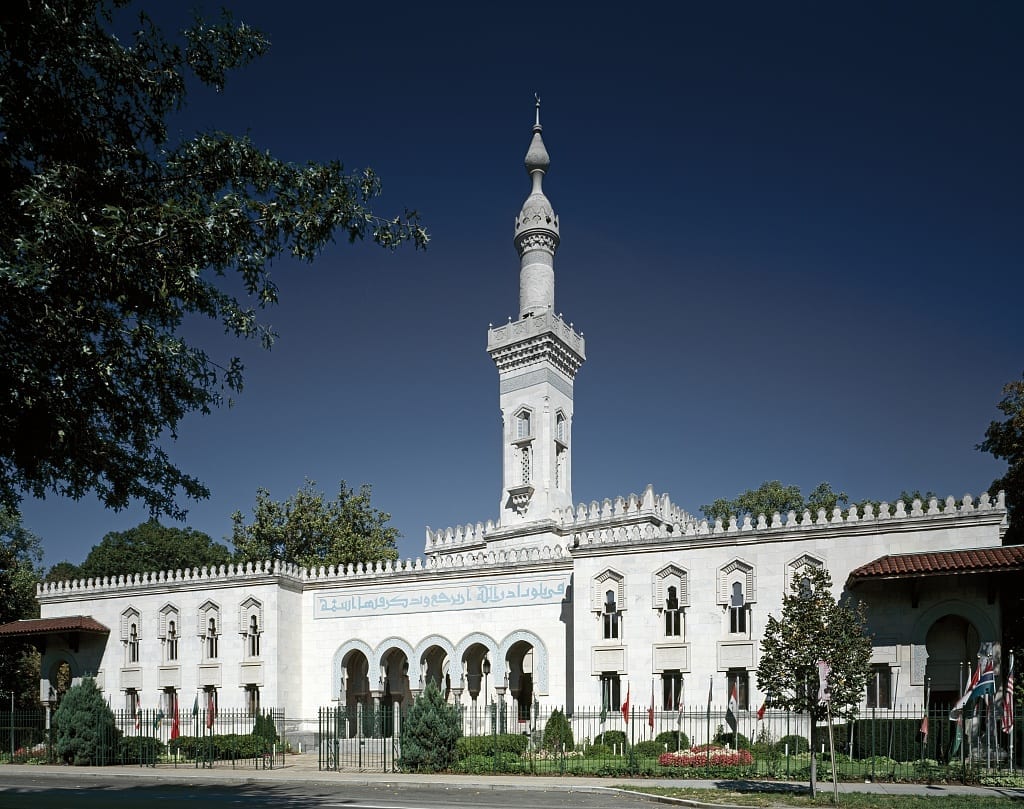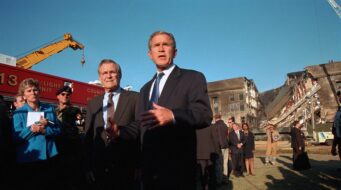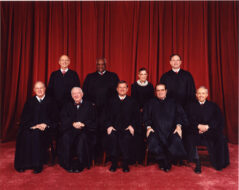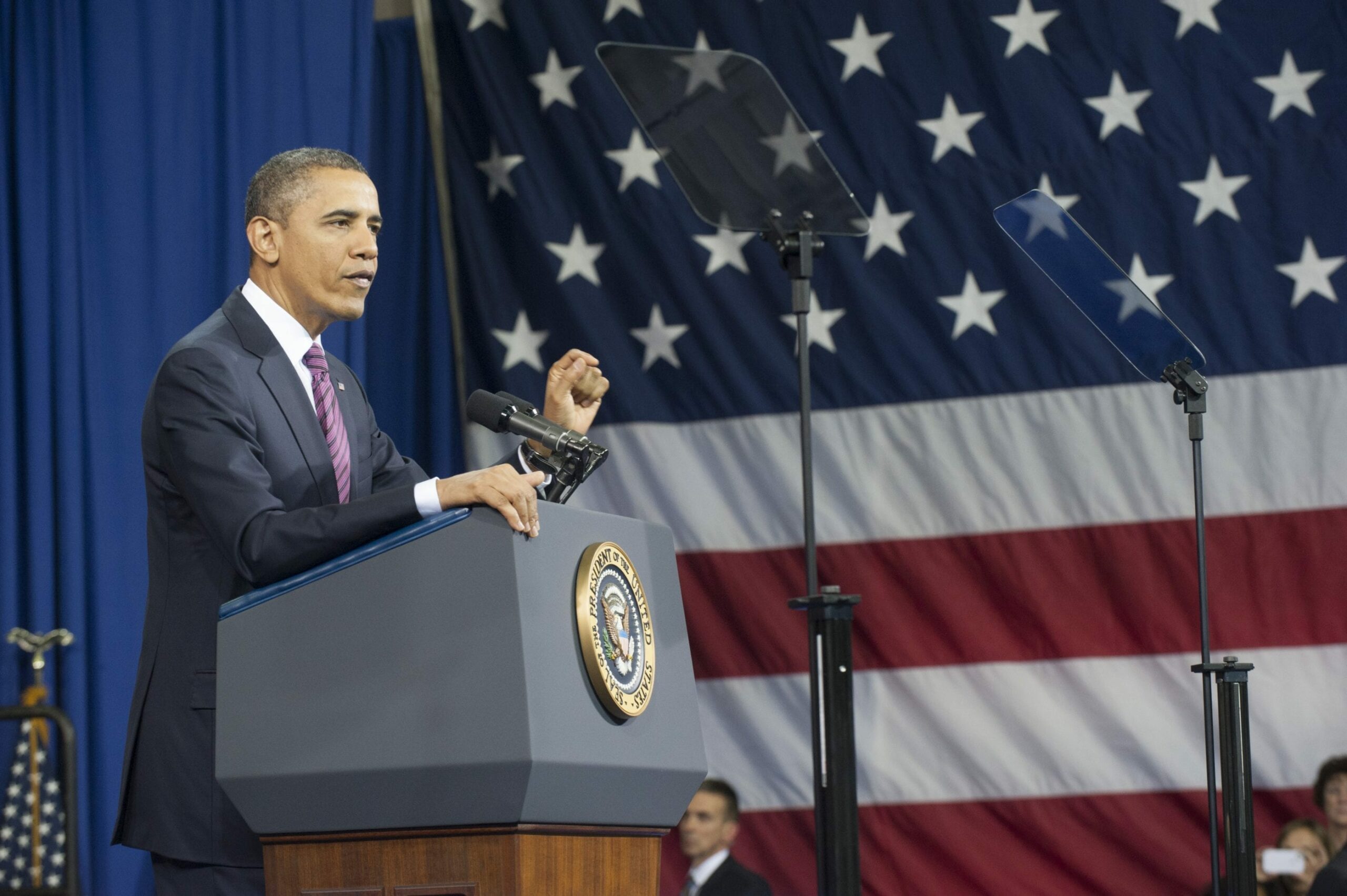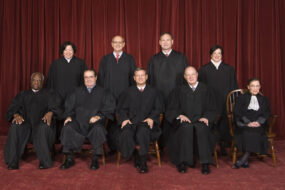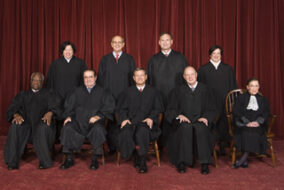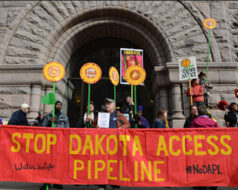


Introduction
B.L., a student at Mahanoy High School, did not make the varsity cheerleading squad. While at the Cocoa Hut, a convenience store located near the school campus, she vented her anger and frustration by posting vulgar language and gestures expressing her disdain for cheerleading and the school on her smartphone’s Snapchat application. Some of B.L.’s Snapchat friends showed the images to some of the other cheerleaders and other students, who were “visibly upset.” One of the cheerleaders showed it to her mother, who was a cheerleading coach. The Snapchat message was discussed in an algebra class, which was also taught by a cheerleading coach. Because B.L. used profanity in connection with an extracurricular event, she was suspended from the cheerleading squad for a year. She sued on First Amendment grounds. The District Court decided in her favor by ruling that her message had not caused “substantial disruption” at school under the Tinker precedent. While the Third Circuit Court upheld this judgment, it also ruled that Tinker did not apply to this case because the speech occurred off campus.
Writing for the majority (the Court split 8–1) Justice Breyer ruled that B.L.’s posts were entitled to First Amendment protection. He cited three features of off-campus speech that distinguished the school’s efforts to regulate it. Among these was the doctrine of in loco parentis, the authority of the school to act in the place of the parent, which Justice Breyer held to be much more limited off campus. Extending the reach of school authority to off-campus use of a smartphone would, in effect, allow total surveillance of students’ lives. While B.L.’s speech was offensive, it was nonetheless protected as a legitimate expression of dissent and criticism. Although Justice Breyer’s opinion afforded robust protection to off-campus speech, he did mention some circumstances, such as bullying and threats to teachers or students, where it could be restricted. Justice Clarence Thomas’ dissenting opinion provides a clear illustration of his judicial philosophy of originalism: judges should interpret the Constitution and its amendments as they were understood at the time of their ratification. The idea of “a living Constitution” is opposed to this view. On the contrary, it argues that judges should interpret the Constitution and its amendments according to contemporary beliefs and values. According to the doctrine of originalism, the proper method for constitutional change is through amendment of the Constitution or passage of laws by Congress, rather than through interpretation of the Constitution or laws by unelected judges who hold office for life.
Source: 594 U. S. (2021), https://www.oyez.org/cases/2020/20-255.
JUSTICE BREYER delivered the opinion of the Court.
A public high school student used, and transmitted to her Snapchat friends, vulgar language and gestures criticizing both the school and the school’s cheerleading team. The student’s speech took place outside of school hours and away from the school’s campus. In response, the school suspended the student for a year from the cheerleading team. We must decide whether the Court of Appeals for the Third Circuit correctly held that the school’s decision violated the First Amendment. Although we do not agree with the reasoning of the Third Circuit panel’s majority, we do agree with its conclusion that the school’s disciplinary action violated the First Amendment....
After discussing the matter with the school principal, the coaches decided that because the posts used profanity in connection with a school extracurricular activity, they violated team and school rules. As a result, the coaches suspended B.L. from the junior varsity cheerleading squad for the upcoming year. B.L.’s subsequent apologies did not move school officials. The school’s athletic director, principal, superintendent, and school board, all affirmed B.L.’s suspension from the team. In response, B.L., together with her parents, filed this lawsuit in Federal District Court....
We have made clear that students do not “shed their constitutional rights to freedom of speech or expression,” even “at the school house gate.”1 But we have also made clear that courts must apply the First Amendment “in light of the special characteristics of the school environment.”2 One such characteristic, which we have stressed, is the fact that schools at times stand in loco parentis, i.e., in the place of parents.3
This Court has previously outlined three specific categories of student speech that schools may regulate in certain circumstances: (1) “indecent,” “lewd,” or “vulgar” speech uttered during a school assembly on school grounds; (2) speech, uttered during a class trip, that promotes “illegal drug use;”4 and (3) speech that others may reasonably perceive as “bear[ing] the imprimatur of the school,” such as that appearing in a school-sponsored newspaper.5
Finally, in Tinker, we said schools have a special interest in regulating speech that “materially disrupts classwork or involves substantial disorder or invasion of the rights of others.” These special characteristics call for special leeway when schools regulate speech that occurs under its supervision.
Unlike the Third Circuit, we do not believe the special characteristics that give schools additional license to regulate student speech always disappear when a school regulates speech that takes place off campus. The school’s regulatory interests remain significant in some off-campus circumstances. The parties’ briefs, and those of amici,6 list several types of off-campus behavior that may call for school regulation. These include serious or severe bullying or harassment targeting particular individuals; threats aimed at teachers or other students; the failure to follow rules concerning lessons, the writing of papers, the use of computers, or participation in other online school activities; and breaches of school security devices, including material maintained within school computers.
Even B.L. herself and the amici supporting her would redefine the Third Circuit’s off-campus/on-campus distinction, treating as on campus: all times when the school is responsible for the student; the school’s immediate surroundings; travel en route to and from the school; all speech taking place over school laptops or on a school’s website; speech taking place during remote learning; activities taken for school credit; and communications to school e-mail accounts or phones. And it may be that speech related to extracurricular activities, such as team sports, would also receive special treatment under B.L.’s proposed rule.
We are uncertain as to the length or content of any such list of appropriate exceptions or carveouts to the Third Circuit majority’s rule. That rule, basically, if not entirely, would deny the off-campus applicability of Tinker’s highly general statement about the nature of a school’s special interests. Particularly given the advent of computer-based learning, we hesitate to determine precisely which of many school-related off-campus activities belong on such a list. Neither do we now know how such a list might vary, depending upon a student’s age, the nature of the school’s off-campus activity, or the impact upon the school itself. Thus, we do not now set forth a broad, highly general First Amendment rule stating just what counts as “off campus” speech and whether or how ordinary First Amendment standards must give way off campus to a school’s special need to prevent, e.g., substantial disruption of learning-related activities or the protection of those who make up a school community.
We can, however, mention three features of off-campus speech that often, even if not always, distinguish schools’ efforts to regulate that speech from their efforts to regulate on-campus speech. Those features diminish the strength of the unique educational characteristics that might call for special First Amendment leeway.
First, a school, in relation to off-campus speech, will rarely stand in loco parentis. The doctrine of in loco parentis treats school administrators as standing in the place of students’ parents under circumstances where the children’s actual parents cannot protect, guide, and discipline them. Geographically speaking, off-campus speech will normally fall within the zone of parental, rather than school-related, responsibility.
Second, from the student speaker’s perspective, regulations of off-campus speech, when coupled with regulations of on-campus speech, include all the speech a student utters during the full 24-hour day. That means courts must be more skeptical of a school’s efforts to regulate off-campus speech, for doing so may mean the student cannot engage in that kind of speech at all. When it comes to political or religious speech that occurs outside school or a school program or activity, the school will have a heavy burden to justify intervention.
Third, the school itself has an interest in protecting a student’s unpopular expression, especially when the expression takes place off campus. America’s public schools are the nurseries of democracy. Our representative democracy only works if we protect the “marketplace of ideas.” This free exchange facilitates an informed public opinion, which, when transmitted to lawmakers, helps produce laws that reflect the People’s will. That protection must include the protection of unpopular ideas, for popular ideas have less need for protection. Thus, schools have a strong interest in ensuring that future generations understand the workings in practice of the well-known aphorism, “I disapprove of what you say, but I will defend to the death your right to say it.” (Although this quote is often attributed to Voltaire, it was likely coined by an English writer, Evelyn Beatrice Hall.)
Given the many different kinds of off-campus speech, the different potential school-related and circumstance-specific justifications, and the differing extent to which those justifications may call for First Amendment leeway, we can, as a general matter, say little more than this: Taken together, these three features of much off-campus speech mean that the leeway the First Amendment grants to schools in light of their special characteristics is diminished. We leave for future cases to decide where, when, and how these features mean the speaker’s off-campus location will make the critical difference. This case can, however, provide one example.
Consider B.L.’s speech. Putting aside the vulgar language, the listener would hear criticism, of the team, the team’s coaches, and the school—in a word or two, criticism of the rules of a community of which B.L. forms a part. This criticism did not involve features that would place it outside the First Amendment’s ordinary protection. B.L.’s posts, while crude, did not amount to fighting words.7 And while B.L. used vulgarity, her speech was not obscene as this Court has understood that term.8 To the contrary, B.L. uttered the kind of pure speech to which, were she an adult, the First Amendment would provide strong protection.9
Consider too when, where, and how B.L. spoke. Her posts appeared outside of school hours from a location outside the school. She did not identify the school in her posts or target any member of the school community with vulgar or abusive language. B.L. also transmitted her speech through a personal cellphone, to an audience consisting of her private circle of Snapchat friends. These features of her speech, while risking transmission to the school itself, nonetheless (for reasons we have just explained) diminish the school’s interest in punishing B.L.’s utterance.
But what about the school’s interest, here primarily an interest in prohibiting students from using vulgar language to criticize a school team or its coaches—at least when that criticism might well be transmitted to other students, team members, coaches, and faculty? We can break that general interest into three parts.
First, we consider the school’s interest in teaching good manners and consequently in punishing the use of vulgar language aimed at part of the school community. The strength of this anti-vulgarity interest is weakened considerably by the fact that B.L. spoke outside the school on her own time.
B.L. spoke under circumstances where the school did not stand in loco parentis. And there is no reason to believe B.L.’s parents had delegated to school officials their own control of B.L.’s behavior at the Cocoa Hut. Moreover, the vulgarity in B.L.’s posts encompassed a message, an expression of B.L.’s irritation with, and criticism of, the school and cheerleading communities. Further, the school has presented no evidence of any general effort to prevent students from using vulgarity outside the classroom. Together, these facts convince us that the school’s interest in teaching good manners is not sufficient, in this case, to overcome B.L.’s interest in free expression.
Second, the school argues that it was trying to prevent disruption, if not within the classroom, then within the bounds of a school-sponsored extracurricular activity. But we can find no evidence in the record of the sort of “substantial disruption” of a school activity or a threatened harm to the rights of others that might justify the school’s action. Rather, the record shows that discussion of the matter took, at most, 5 to 10 minutes of an algebra class “for just a couple of days” and that some members of the cheerleading team were “upset” about the content of B.L.’s Snapchats. But when one of B.L.’s coaches was asked directly if she had “any reason to think that this particular incident would disrupt class or school activities other than the fact that kids kept asking ... about it,” she responded simply, “No.” As we said in Tinker, “for the State in the person of school officials to justify prohibition of a particular expression of opinion, it must be able to show that its action was caused by something more than a mere desire to avoid the discomfort and unpleasantness that always accompany an unpopular viewpoint.”10
Third, the school presented some evidence that expresses (at least indirectly) a concern for team morale. One of the coaches testified that the school decided to suspend B.L. not because of any specific negative impact upon a particular member of the school community, but “based on the fact that there was negativity put out there that could impact students in the school.” There is little else, however, that suggests any serious decline in team morale—to the point where it could create a substantial interference in, or disruption of, the school’s efforts to maintain team cohesion. As we have previously said, simple “undifferentiated fear or apprehension ... is not enough to overcome the right to freedom of expression.”11
It might be tempting to dismiss B.L.’s words as unworthy of the robust First Amendment protections discussed herein. But sometimes it is necessary to protect the superfluous in order to preserve the necessary. “We cannot lose sight of the fact that, in what otherwise might seem a trifling and annoying instance of individual distasteful abuse of a privilege, these fundamental societal values are truly implicated.”12
Although we do not agree with the reasoning of the Third Circuit’s panel majority, for the reasons expressed above, resembling those of the panel’s concurring opinion, we nonetheless agree that the school violated B.L.’s First Amendment rights. The judgment of the Third Circuit is therefore affirmed.
It is so ordered.
JUSTICE THOMAS, dissenting.
B.L., a high school student, sent a profanity-laced message to hundreds of people, including classmates and teammates. ... This message was juxtaposed with another, which explained that B.L. was frustrated that she failed to make the varsity cheerleading squad. The cheerleading coach responded by disciplining B.L.
The Court overrides that decision—without even mentioning the 150 years of history supporting the coach. Using broad brushstrokes, the majority outlines the scope of school authority. When students are on campus, the majority says, schools have authority in loco parentis—that is, as substitutes of parents—to discipline speech and conduct. Off campus, the authority of schools is somewhat less. At that level of generality, I agree. But the majority omits important detail. What authority does a school have when it operates in loco parentis? How much less authority do schools have over off-campus speech and conduct? And how does a court decide if speech is on or off campus?
Disregarding these important issues, the majority simply posits three vague considerations and reaches an outcome. A more searching review reveals that schools historically could discipline students in circumstances like those presented here. Because the majority does not attempt to explain why we should not apply this historical rule and does not attempt to tether its approach to anything stable, I respectfully dissent.
While the majority entirely ignores the relevant history, I would begin the assessment of the scope of free-speech rights incorporated against the states by looking to “what ‘ordinary citizens’ at the time of [the Fourteenth Amendment’s] ratification would have understood” the right to encompass.13 Cases and treatises from that era reveal that public schools retained substantial authority to discipline students. As I have previously explained, that authority was near plenary while students were at school. Authority also extended to when students were traveling to or from school. And, although schools had less authority after a student returned home, it was well settled that they still could discipline students for off-campus speech or conduct that had a proximate tendency to harm the school environment.
Perhaps the most familiar example applying this rule is a case where a student, after returning home from school, used “disrespectful language” against a teacher—he called the teacher “old”—“in presence of the [teacher] and of some of his fellow pupils.”14 The Vermont Supreme Court held that the teacher could discipline a student for this speech because the speech had “a direct and immediate tendency to injure the school, to subvert the master’s authority, and to beget disorder and insubordination.” The court distinguished the speech at issue from speech “in no ways connected with or affecting the school” and speech that has “merely a remote and indirect tendency to injure.”...
This rule was widespread. It was consistent with “the universal custom” in New England. Various cases, treatises, and school manuals endorsed it.15 And a justice of the Rhode Island Supreme Court, presiding over a trial, declared the rule “well settled.”16
If there is a good constitutional reason to depart from this historical rule, the majority and the parties fail to identify it. I would thus apply the rule. Assuming that B.L.’s speech occurred off campus, the purpose and effect of B.L.’s speech was “to degrade the [program and cheerleading staff]” in front of “other pupils,” thus having “a direct and immediate tendency to ... subvert the [cheerleading coach’s] authority.” As a result, the coach had authority to discipline B.L.
The majority declines to consider any of this history, instead favoring a few pragmatic guideposts. This is not the first time the Court has chosen intuition over history when it comes to student speech. The larger problem facing us today is that our student-speech cases are untethered from any textual or historical foundation. That failure leads the majority to miss much of the analysis relevant to these kinds of cases.
- 1. Tinker v. Des Moines Independent Community School District (1969).
- 2. Hazelwood School Dist. v. Kuhlmeier (1988).
- 3. Bethel School Dist. No. 403 v. Fraser1986).
- 4. Morse v Frederick (2007).
- 5. Kuhlmeier.
- 6. Amicus curiae, or in the plural amici, is a Latin phrase meaning friends of the court. Amici offer advisory opinions to the court.
- 7. Chaplinsky v. New Hampshire.
- 8. Cohen v. California.
- 9. Cohen v. California.
- 10. Tinker v. Des Moines (1969).
- 11. Tinker v. Des Moines (1969).
- 12. Cohen v. California (1971).
- 13. Justice Thomas referred to the Fourteenth Amendment because it is through the due process clause of that amendment that the First Amendment applies to the states. See Gitlow v. New York (1925)
- 14. Lander v. Seaver (1859) was a Vermont Supreme Court case.
- 15. In a note, Justice Thomas cited several examples.
- 16. Justice Thomas’ note: T. Stockwell, The School Manual, Containing the School Laws of Rhode Island, 236–238 (1882).

Conversation-based seminars for collegial PD, one-day and multi-day seminars, graduate credit seminars (MA degree), online and in-person.
